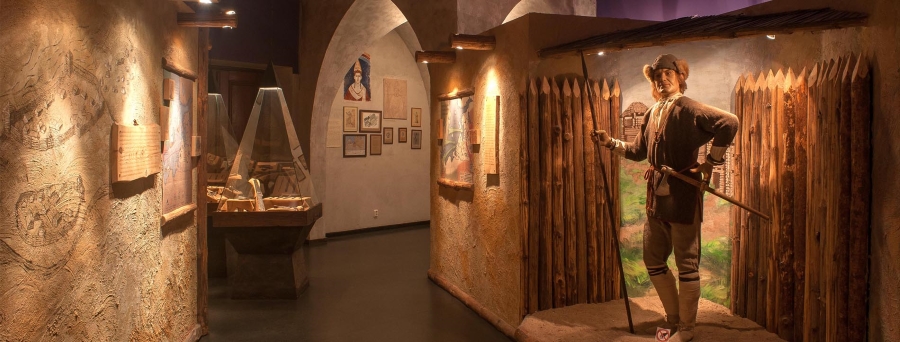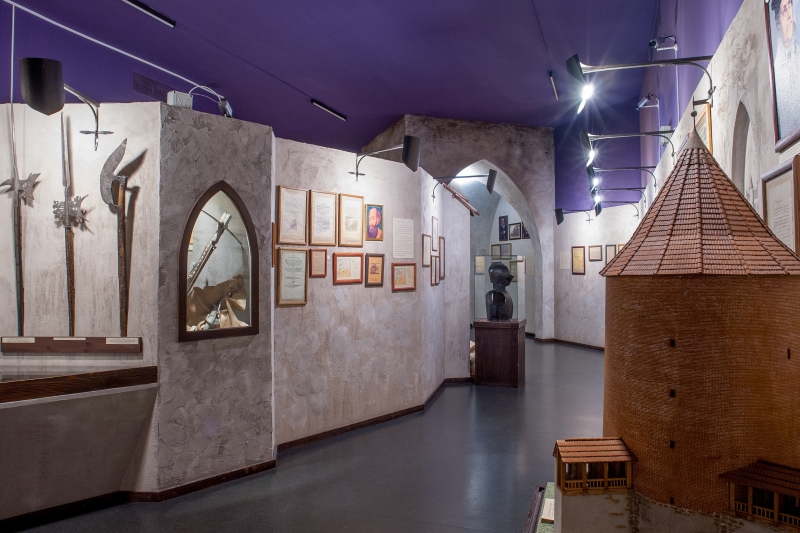
The exposition reflects the oldest part of Latvian history. Our ancestors once lived here - the Curonians, the Semigallians, the Selonians, the Latgalians and the Livs. Countless enemy troops wanted to conquer these lands since ancient times - Scandinavians, Germans, Russians, Poles, Swedes, Danes.
In the end of 12th century The Pope of Rome declared the crusades against the lands of our ancestors. During those crusades the pagan people of Baltic coast were baptized and included in the cultural landscape of Western Europe. Thanks to archaeological excavations, today we know what our ancestors were armed with during those wars. In turn, thanks to ancient chronicles, descriptions of our predecessors fight against the conquerors have come to the present day. That was the age of the warriors.
In the 13th century, the territory of modern Latvia and Estonia fell into the hands of German conquerors – crusaders of the Livonian Order. Until the 16th century that territory was called Livonia, with included state of the Livonian Order, the city of Riga, Archbishopric of Riga, Bishopric of Courland, Bishopric of Dorpat and Bishopric of Ösel–Wiek. Although the political and administrative power at that time was in the hands of foreigners, the locals were able to preserve and develop their language, culture and traditions.
In the lands administered by the Livonian Order and the Catholic Church the local aristocracy fell in the vassal dependency of their foreign lords. Vassal duties included performing military tasks and participating in crusades in Livonian troops. During the existence of the Livonian state, the southern and eastern borders of Latvia acquired the shape of modern days. Also, at that time the formation of the Latvian nation and language began.
In the 16th century, as a result of the Livonian War (1558-1583), the Livonian state ceased to exist and other foreign rulers began to rule this area. Two of the historical regions of modern Latvia - “Vidzeme” and “Latgale” came under the direct control of the Polish-Lithuanian king, but two other “Kurzeme” and “Zemgale” became a Polish-dependent duchy.
The exhibit features unique antiques from the collections of the Latvian War Museum and the Latvian National History Museum: Curonian and Semigallian weapons, 15th century cannon camera, 16th century rifle with a wheel-lock mechanism, antique maps, ancient warrior mannequins, models of ancient castles and cities and much more...




